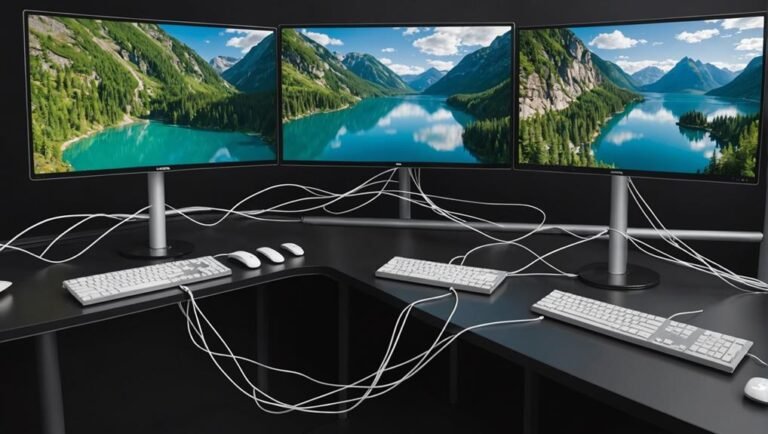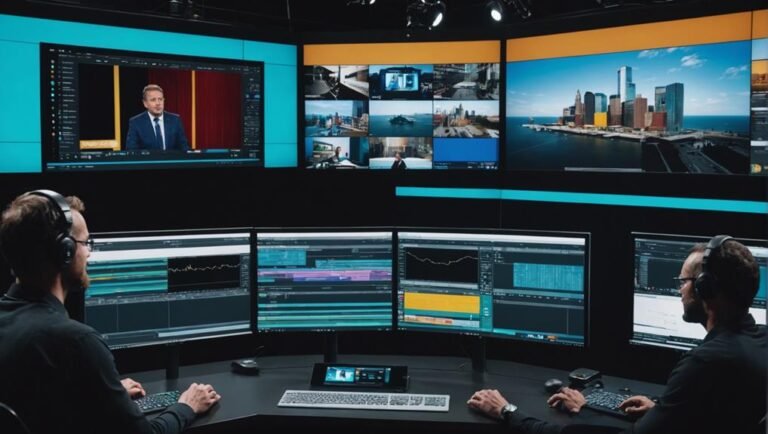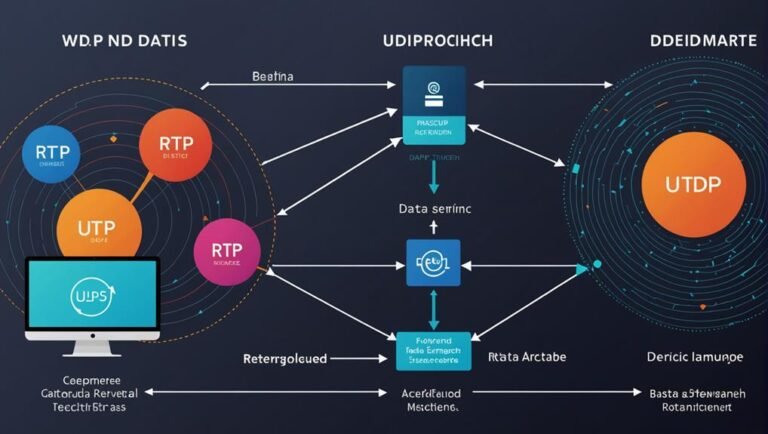When choosing between CCTV and security cameras, think about your needs for privacy, installation, and monitoring. CCTV systems are hardwired, making them more secure and self-contained, ideal for places needing constant surveillance like banks. Modern security cameras are often wireless and offer high-resolution footage, remote monitoring, and flexibility in placement. They are perfect for homes and businesses wanting ease of use and advanced features like motion detection. While CCTV requires a more complex setup and higher initial costs, security cameras are generally more affordable and simpler to install. Wondering which is right for you? Let’s explore their details and applications.
Definition and Overview
So, what exactly sets CCTV apart from a standard security camera? CCTV, or Closed-Circuit Television, offers a private and secure way to monitor your surroundings. Unlike standard security cameras that often connect to the internet for remote access, CCTV systems are generally hardwired and designed for local use. This means no one but you can view the footage, giving you a sense of security and control over your own space.
CCTV systems are typically used in places where continuous surveillance is essential, like banks, casinos, and airports. They provide a continuous feed to a specific set of monitors, ensuring you’re always in the loop about what’s happening. On the other hand, standard security cameras are more flexible and accessible, often connecting to your smartphone or computer, but they can be prone to hacking and unauthorized access.
When you choose CCTV, you’re opting for a closed system that prioritizes your privacy. It’s your own personal network, not exposed to the vulnerabilities of the internet. So, if maintaining control and safeguarding your footage from prying eyes is important to you, CCTV offers a robust solution.
System Components
Every CCTV system consists of several key components that work together to provide extensive surveillance. First, you’ve got the cameras. These are the eyes of your system, capturing video footage. Whether you choose dome, bullet, or PTZ (pan-tilt-zoom) cameras, each has its strengths to suit various environments.
Next, there’s the Digital Video Recorder (DVR) or Network Video Recorder (NVR). This device stores and manages all the footage your cameras capture. DVRs are typically used for analog systems, while NVRs are for IP cameras. Both make sure you can review past recordings whenever needed.
Monitors are another essential component. They display live and recorded video, allowing you to keep an eye on everything in real time. Without a monitor, you’d be flying blind.
Cabling is often overlooked, but it’s crucial. It connects your cameras to the recording device and power sources. For IP systems, Ethernet cables handle both data and power through Power over Ethernet (PoE).
Lastly, there’s the power supply. Your system won’t function without a reliable source of power. Whether it’s a centralized power supply or individual adapters, keeping your cameras running is a must.
These components form the backbone of any effective CCTV system, giving you the freedom to monitor your space securely.
Installation Process
Installing a CCTV system may seem challenging, but breaking it down into manageable steps can simplify the process. First, decide where you want to place your cameras. Choose high-traffic areas, entry points, and any vulnerable spots around your property. Make sure the cameras have a clear line of sight and can cover the necessary distances.
Next, mount the cameras. Follow the manufacturer’s instructions, and make sure you have the right tools. Use screws and brackets to secure the cameras in place. Once the cameras are mounted, run the cables from the cameras to your recording device. It’s best to keep cables hidden to avoid tampering.
Now, connect your cameras to the DVR or NVR. Plug the cables into the corresponding ports. Power up the system and check each camera’s feed to confirm everything is working correctly. Adjust the camera angles as needed for optimal coverage.
Connectivity Options
When selecting between CCTV and security cameras, understanding the various connectivity options is crucial for guaranteeing dependable performance and ease of use. CCTV systems typically rely on wired connections, which means you’ll need to run cables from each camera to a central recording device. While this can provide a stable and interference-free signal, the installation process can be cumbersome and restricts camera placement to areas where wiring is feasible.
On the other hand, modern security cameras often come with wireless options. These cameras can connect to your home Wi-Fi network, giving you the flexibility to place them almost anywhere within range of the signal. Wireless cameras are easier to install and can be quickly repositioned if needed. However, they might be vulnerable to signal interference or hacking, so make sure you have robust network security measures in place.
Some advanced security cameras also offer hybrid solutions, combining both wired and wireless capabilities. This gives you the best of both worlds: the reliability of wired connections in critical areas and the flexibility of wireless cameras for harder-to-reach spots. Ultimately, your choice will depend on your specific needs, preferences, and the layout of your property.
Video Quality
As you consider connectivity options, it’s equally important to evaluate the video quality that CCTV and security cameras offer. You want clear footage to make sure you can identify faces, license plates, and other important details. Generally, modern security cameras provide higher resolution compared to traditional CCTV systems. Security cameras often offer 1080p or even 4K resolution, giving you crisp, clear images.
CCTV systems, especially older models, might lag behind with lower resolution, sometimes struggling in low-light conditions. However, newer CCTV systems have started to catch up, offering high-definition options that can rival standalone security cameras. Still, the gap remains noticeable, particularly in dynamic environments where high resolution is essential.
Don’t overlook the importance of features like night vision and wide dynamic range (WDR). Security cameras often come equipped with infrared LEDs for night vision, allowing you to monitor even in complete darkness. WDR helps manage challenging lighting conditions, making sure your footage isn’t washed out by bright lights or engulfed in shadows.
In essence, if you’re seeking freedom through unrestricted clarity and precision, investing in modern security cameras with superior video quality could be your best bet. Choose wisely to maximize your peace of mind.
Storage Solutions
You’ll need to think about how you’ll store your footage, as both CCTV and modern security cameras offer different storage solutions. With traditional CCTV systems, you’re often tied to on-site storage, like DVRs or NVRs. These devices store footage directly on hard drives, giving you control over your data but requiring physical space and occasional maintenance. You might appreciate the independence of not relying on the internet, but remember, if something happens to the DVR or NVR, your footage could be lost.
Modern security cameras, on the other hand, frequently use cloud storage. This means your footage is uploaded to remote servers, accessible anytime and from anywhere. It’s a more flexible option, especially if you’re always on the go. However, keep in mind that cloud storage usually comes with subscription fees, and you’ll need a reliable internet connection.
You could also consider hybrid systems that offer both local and cloud storage, giving you the best of both worlds. This way, you’ve got a backup if one method fails. Ultimately, the choice depends on your lifestyle and how much freedom you want in accessing and protecting your footage.
Remote Monitoring
With remote monitoring, you can keep an eye on your property in real-time from virtually anywhere. This feature gives you the freedom to travel, work, or simply relax without constantly worrying about what’s happening at home or your business. Modern security cameras, unlike traditional CCTV systems, leverage internet connectivity to deliver live feeds straight to your smartphone, tablet, or computer.
Here’s why remote monitoring is a game-changer:
- Instant Alerts: Get immediate notifications if the camera detects motion or unusual activity. This allows you to respond quickly, whether it’s calling authorities or checking in through the camera’s two-way audio feature.
- Access Anytime, Anywhere: You’re not tied down to a specific location. As long as you have internet access, you can view live or recorded footage, granting you unparalleled flexibility.
- Multiple Camera Feeds: Monitor various areas of your property at once. Switch between different camera angles or views with just a few taps on your device.
- Enhanced Security: Deter potential intruders by letting them know they’re being watched. Visible cameras with remote monitoring capabilities can serve as a robust deterrent to crime.
With these benefits, remote monitoring offers a level of oversight and peace of mind that aligns perfectly with a lifestyle seeking freedom and security.
Cost Comparison
While remote monitoring offers significant advantages, understanding the cost differences between traditional CCTV systems and modern security cameras is equally important to make an informed decision. You want to know if the investment is worth it and if it aligns with your budget and needs.
Traditional CCTV systems often come with higher initial setup costs due to the need for extensive wiring and a dedicated monitoring station. On the other hand, modern security cameras, especially wireless options, can be more affordable and simpler to install. Additionally, ongoing maintenance and potential upgrades can add to the overall expense for both options.
Here’s a quick comparison:
| Feature | Traditional CCTV | Modern Security Cameras |
|---|---|---|
| Initial Setup Cost | High | Moderate to Low |
| Installation Complexity | Complex | Simple |
| Maintenance Costs | High | Moderate |
| Upgrade Flexibility | Limited | High |
| Remote Monitoring Fees | Often Additional | Usually Included |
Freedom to choose the right system hinges on balancing these costs with your security needs. Modern security cameras offer flexibility and often come with lower ongoing expenses, making them an attractive option for those seeking cost-effective, reliable security solutions.
Use Cases
Many different scenarios highlight the effectiveness of both traditional CCTV systems and modern security cameras for various security needs. No matter what kind of freedom you’re seeking, there’s a use case that fits your lifestyle.
- Home Security: You want to keep your loved ones safe, right? Security cameras offer real-time monitoring and remote access, allowing you to check in from anywhere. CCTVs can deter intruders, but they’re often best suited for thorough, continuous recording.
- Business Surveillance: Running a business means protecting your assets. CCTV systems provide robust, reliable coverage, ideal for monitoring large areas like warehouses. Modern security cameras, however, offer flexibility with features like cloud storage and alerts, perfect for small businesses and retail.
- Public Spaces: Think parks, streets, or communal areas. CCTVs are often used by local authorities for extensive surveillance, helping maintain public safety. Security cameras, on the other hand, are great for specific spots where you need clear, actionable footage.
- Event Monitoring: Whether it’s a concert, festival, or protest, you want to capture everything. Security cameras can be quickly deployed and relocated, providing versatility. CCTVs offer continuous coverage, ensuring no moment is missed.
Ultimately, both systems have their place, depending on your specific needs and the level of freedom you desire.
Security Features
Understanding the specific security features of CCTV systems and modern security cameras can help you decide which option best meets your needs. CCTV systems often come with robust features like constant recording, professional monitoring, and high durability. They’re great for businesses where you need continuous oversight and a reliable system that can withstand various conditions. These systems usually store footage on a local hard drive, making it harder for cybercriminals to access your data.
Modern security cameras, on the other hand, offer you more flexibility and advanced tech. Wireless models are easy to install, and many come with smart features like motion detection, facial recognition, and remote access via your smartphone. You can receive real-time alerts and even control your camera’s settings remotely, giving you more freedom to manage your security on the go.
If you value cutting-edge technology and convenience, modern security cameras might be your best bet. However, if you need a tried-and-true system for constant surveillance, a CCTV system could be the way to go. Weighing these features will help you choose the system that aligns with your lifestyle and security needs.
Frequently Asked Questions
How Do Weather Conditions Affect the Performance of Security Cameras?
Just like a foggy windshield, bad weather can blur security cameras. Rain, snow, and fog reduce visibility. Extreme temperatures might cause malfunctions. Keep your gear in check to make sure you’re always watching with clarity and freedom.
Can Security Cameras Integrate With Smart Home Systems?
Yes, security cameras can easily integrate with smart home systems. You’ll enjoy the freedom to monitor your home remotely, automate alerts, and even control other devices, giving you enhanced control and peace of mind.
Are There Legal Restrictions on Where I Can Place Security Cameras?
Did you know 73% of homeowners with security cameras avoid legal issues by following placement laws? You can’t put cameras where people expect privacy, like bathrooms or bedrooms. Always check local regulations to guarantee your freedom.
How Do I Maintain and Clean My Security Cameras?
To maintain and clean your security cameras, regularly wipe the lenses with a microfiber cloth, make sure they’re free from debris, and check for software updates. Keep them unobstructed to guarantee peak performance and clear footage.
What Are the Privacy Concerns Associated With Using Security Cameras?
Did you know 60% of people worry about privacy with security cameras? You’ve got to balance safety and freedom, ensuring cameras don’t overreach. Always inform others and avoid placing them in private areas like bedrooms or bathrooms.



